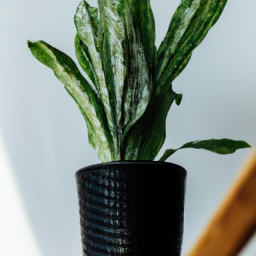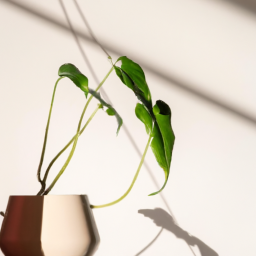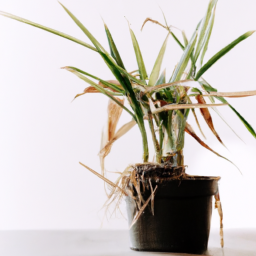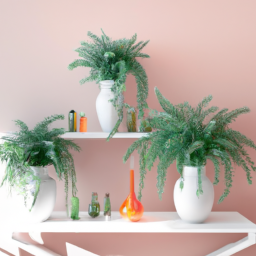
Have you ever wondered why indoor plants don’t need sunlight to thrive? It may seem counterintuitive, especially since we often associate plants with needing sunlight for photosynthesis. But the truth is, there are certain types of indoor plants that can thrive in low light conditions. In this blog post, we will explore the reasons why indoor plants don’t need sunlight and how you can care for them effectively. So, if you’re looking to brighten up your home with some greenery but don’t have a lot of natural light, keep reading to learn more!
Benefits of Low-Light Indoor Plants
As an expert on indoor plants, I am often asked why some plants thrive indoors without direct sunlight. The truth is, there are many benefits to choosing low-light indoor plants for your home or office. In this article, I will explain why indoor plants don’t need sunlight and the advantages of incorporating them into your indoor space.
Understanding Low-Light Indoor Plants
Low-light indoor plants are species that have adapted to thrive in environments with minimal natural light. These plants have evolved to make the most of the available light, whether it be from artificial sources or indirect sunlight. They are perfect for spaces that don’t receive much natural light, such as north-facing rooms or offices with limited windows.
One of the main reasons why low-light indoor plants don’t need direct sunlight is because they have evolved mechanisms to efficiently absorb and utilize light energy. These plants have adapted to thrive in shaded areas by increasing their chlorophyll content, which allows them to photosynthesize effectively even in low-light conditions.
Another factor that contributes to the success of low-light indoor plants is their ability to tolerate fluctuations in light levels. Unlike sun-loving plants that require a consistent amount of sunlight to thrive, low-light plants can adapt to changing light conditions and continue to grow and thrive even in less-than-ideal environments.
The Benefits of Low-Light Indoor Plants
There are several advantages to choosing low-light indoor plants for your indoor space. One of the main benefits is their ability to improve indoor air quality. Plants naturally absorb carbon dioxide and release oxygen through photosynthesis, which can help purify the air and create a healthier indoor environment.
Low-light indoor plants also have been shown to reduce stress and improve mood. Studies have found that being around plants can have a calming effect on the mind and body, leading to lower levels of anxiety and increased feelings of well-being. By incorporating low-light plants into your indoor space, you can create a more relaxing and inviting atmosphere.
Additionally, low-light indoor plants can help increase productivity and creativity. Research has shown that having plants in the workplace can boost concentration and cognitive function, leading to improved performance on tasks and increased creativity. By adding low-light plants to your office or home office, you can create a more inspiring and productive work environment.

Understanding Photosynthesis in Indoor Plants
Hey there! Are you curious about why indoor plants don’t need sunlight to survive and thrive? Let’s dive into the fascinating world of photosynthesis in indoor plants to uncover the reasons behind this phenomenon.
The Role of Sunlight in Photosynthesis
Photosynthesis is the process by which plants convert light energy into chemical energy, which is stored in the form of glucose. Sunlight is a crucial component of photosynthesis as it provides the energy needed to drive this process. When sunlight hits the chlorophyll in plant cells, it triggers a series of chemical reactions that ultimately result in the production of glucose and oxygen.
However, indoor plants have evolved to adapt to low-light conditions by making use of artificial light sources such as grow lights. These lights mimic the spectrum of sunlight, providing the necessary energy for photosynthesis to occur. In addition, some indoor plants have developed mechanisms to increase their efficiency in capturing and utilizing light, allowing them to thrive even in the absence of direct sunlight.
So, while sunlight is essential for photosynthesis in plants, indoor plants have found ways to cope with low-light environments and continue to carry out this vital process with the help of artificial light sources.
The Importance of Light Quality and Duration
When it comes to indoor plants, the quality and duration of light exposure play a crucial role in determining their growth and overall health. Different plants have varying light requirements, with some needing more intense light while others can thrive in low-light conditions.
It’s important to consider the spectrum of light that indoor plants receive, as different wavelengths of light have varying effects on plant growth and development. For example, blue light is essential for promoting leaf growth and overall plant health, while red light is crucial for flowering and fruiting.
In addition to light quality, the duration of light exposure also plays a significant role in photosynthesis. Most indoor plants require around 12-16 hours of light per day to carry out photosynthesis effectively. Providing the right balance of light quality and duration is key to ensuring that your indoor plants thrive and remain healthy.
Adapting Indoor Plants to Low-Light Environments
Indoor plants have evolved a range of adaptations to thrive in low-light environments, allowing them to make the most of available light sources. Some plants have developed larger surface areas on their leaves to capture more light, while others have increased the efficiency of their chlorophyll molecules to maximize light absorption.
In addition, certain indoor plants have developed mechanisms to store energy and nutrients during periods of low light, allowing them to survive and even thrive in challenging conditions. By understanding the unique adaptations of indoor plants, you can provide the right environment and care to help them flourish in your home.
So, the next time you marvel at your thriving indoor plants, remember that they have a fascinating ability to adapt to low-light environments and continue to carry out photosynthesis with the help of artificial light sources. By understanding the role of sunlight in photosynthesis and the adaptations of indoor plants, you can create an optimal environment for your green companions to thrive and bring beauty to your home.

Tips for Caring for Sunlight-Deprived Indoor Plants
Understanding the Needs of Indoor Plants
When it comes to caring for indoor plants, one of the most common misconceptions is that they need sunlight to thrive. While it is true that sunlight is essential for most plants to photosynthesize and grow, there are actually many indoor plants that can survive and even thrive in low-light conditions. Understanding the specific needs of indoor plants is crucial in order to provide them with the proper care they require.
Indoor plants that are able to thrive in low-light conditions have adapted to survive in environments where sunlight is limited. These plants have evolved to be able to make the most of the light that is available to them, often by having larger leaves to capture more light or by storing energy more efficiently. By choosing plants that are well-suited to low-light conditions, you can ensure that they will be able to thrive in your home or office.
It is important to remember that even though indoor plants may not need direct sunlight to survive, they still require some light in order to photosynthesize and grow. While low-light plants can survive in dimly lit rooms, they will still benefit from being placed near a window where they can receive some natural light. Additionally, providing your indoor plants with artificial light sources, such as grow lights, can help to supplement their light requirements and promote healthy growth.
In order to care for your sunlight-deprived indoor plants, it is important to pay attention to their specific needs and provide them with the proper care and attention. By understanding the unique characteristics of low-light plants and providing them with the light, water, and nutrients they require, you can ensure that they will thrive in your indoor space.
Choosing the Right Plants for Low-Light Conditions
When selecting indoor plants for low-light conditions, it is important to choose species that are well-suited to thrive in environments where sunlight is limited. There are many different types of plants that are able to survive and even thrive in low-light conditions, making it easy to find the perfect plant for your indoor space.
Some popular indoor plants that are well-suited to low-light conditions include snake plants, pothos, peace lilies, and spider plants. These plants are able to survive in dimly lit rooms and require minimal care, making them perfect for beginners or for those with busy lifestyles. By choosing plants that are well-adapted to low-light conditions, you can ensure that they will be able to thrive in your home or office.
In addition to choosing plants that are well-suited to low-light conditions, it is also important to consider the specific light requirements of each plant. While some plants may be able to survive in very low-light conditions, others may require slightly more light in order to thrive. By understanding the specific needs of each plant and providing them with the proper care and attention, you can ensure that they will be able to thrive in your indoor space.
Caring for Sunlight-Deprived Indoor Plants
When caring for sunlight-deprived indoor plants, it is important to provide them with the proper light, water, and nutrients they require in order to thrive. While low-light plants are able to survive in dimly lit rooms, they still require some light in order to photosynthesize and grow. By placing your indoor plants near a window where they can receive some natural light or by providing them with artificial light sources, such as grow lights, you can ensure that they will be able to thrive in your indoor space.
In addition to light, indoor plants also require regular watering in order to stay healthy and vibrant. It is important to water your plants regularly, but be careful not to overwater them as this can lead to root rot and other problems. By allowing the soil to dry out slightly between waterings and using a well-draining potting mix, you can ensure that your indoor plants receive the right amount of water they need to thrive.
Finally, indoor plants also require regular feeding in order to stay healthy and promote growth. By providing your plants with a balanced fertilizer on a regular basis, you can ensure that they receive the nutrients they need to thrive. It is important to follow the instructions on the fertilizer package and to avoid over-fertilizing your plants, as this can lead to nutrient deficiencies and other problems.
By understanding the specific needs of your sunlight-deprived indoor plants and providing them with the proper care and attention, you can ensure that they will thrive in your indoor space. With the right light, water, and nutrients, your indoor plants will be able to grow and flourish, bringing beauty and life to your home or office.
Here are the Essential Points
Have you ever wondered why indoor plants can thrive without direct sunlight? It turns out that many houseplants are perfectly content with just artificial light sources. In fact, some plants can even suffer from too much sunlight, as it can lead to sunburn or dehydration. This is because indoor plants have adapted to lower light levels in their natural habitats, making them well-suited for indoor environments.
Plants are able to photosynthesize using the light provided by artificial sources such as LED or fluorescent bulbs. These artificial lights can mimic the spectrum of natural sunlight, providing the necessary energy for plants to grow and thrive. Additionally, some plants have evolved to be more shade-tolerant, allowing them to make the most of even the dimmest indoor lighting conditions. So next time you’re worried about your indoor plants not getting enough sunlight, rest assured that they can still flourish with the right artificial light sources.
Q&A Corner:
Q1: Do indoor plants really not need sunlight to survive?
A1: Yes, indoor plants can survive and even thrive without direct sunlight. While sunlight is essential for photosynthesis, some indoor plants can adapt to low light conditions and still grow.
Q2: How do indoor plants survive without sunlight?
A2: Indoor plants can survive without sunlight by utilizing artificial light sources such as grow lights or fluorescent bulbs. These artificial lights provide the necessary spectrum of light for plants to carry out photosynthesis.
Q3: What are some indoor plants that don’t need sunlight?
A3: Some indoor plants that can thrive in low light conditions include snake plants, pothos, peace lilies, and ZZ plants. These plants have adapted to survive with minimal sunlight and are great options for indoor spaces with limited natural light.
Q4: How can I ensure my indoor plants are getting enough light without direct sunlight?
A4: To ensure your indoor plants are getting enough light without direct sunlight, you can place them near a window where they can receive indirect sunlight. You can also supplement with artificial light sources to provide the necessary light for photosynthesis.
Q5: What are some signs that my indoor plants are not getting enough light?
A5: Some signs that your indoor plants are not getting enough light include yellowing or browning leaves, stunted growth, and leggy or spindly stems. If you notice these signs, consider moving your plants to a brighter location or supplementing with artificial light.
Dr. Olivia Green is a botanist with over two decades of experience in indoor plant cultivation. She holds a Ph.D. in Plant Biology and has dedicated her career to researching plant behavior in controlled environments. Dr. Green is passionate about helping plant enthusiasts master the art of indoor gardening through her extensive knowledge and practical insights.


